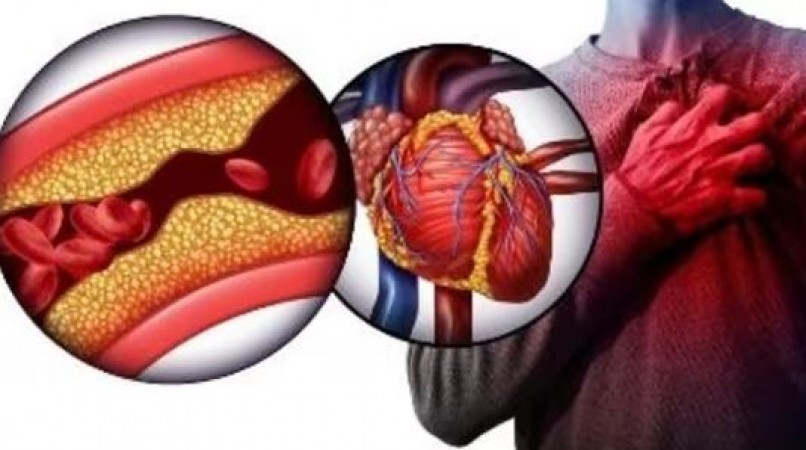
In recent findings, it has been highlighted that several dangerous diseases pose a significant threat to life. This report sheds light on how these conditions can potentially lead to fatal outcomes and offers insights on prevention strategies.
1. Diabetes (Diabetes Mellitus)
Diabetes is a chronic condition that affects the body's ability to regulate blood sugar levels. High blood sugar over time can lead to severe complications, including cardiovascular disease, kidney damage, nerve damage, and eye problems. Uncontrolled diabetes can result in life-threatening conditions such as diabetic ketoacidosis and hyperosmolar hyperglycemic state. To prevent diabetes-related complications, maintaining a healthy diet, engaging in regular physical activity, and monitoring blood glucose levels are crucial.
2. Hypertension (High Blood Pressure)
Hypertension is often referred to as a "silent killer" because it may not present symptoms until it causes significant damage. Prolonged high blood pressure can lead to stroke, heart attack, heart failure, and kidney damage. Managing blood pressure through lifestyle changes such as reducing sodium intake, regular exercise, and medication adherence is essential for reducing the risk of severe health issues.
3. Stroke
A stroke occurs when the blood supply to the brain is interrupted, leading to brain cell death. This can result from a blocked artery (ischemic stroke) or a burst blood vessel (hemorrhagic stroke). Strokes can cause permanent disability or death if not treated promptly. Risk factors include hypertension, diabetes, high cholesterol, and smoking. Recognizing stroke symptoms early and seeking immediate medical attention are critical for survival and recovery.
4. Obesity
Obesity is characterized by excessive fat accumulation that poses health risks. It is associated with several serious conditions, including heart disease, type 2 diabetes, certain cancers, and sleep apnea. Obesity can lead to a higher risk of premature death. Addressing obesity involves adopting a balanced diet, increasing physical activity, and, in some cases, medical or surgical interventions.
5. Oral Cancer
Oral cancer affects the tissues of the mouth and throat. Risk factors include tobacco use, excessive alcohol consumption, and human papillomavirus (HPV) infection. Early detection and treatment are crucial for improving survival rates. Regular dental check-ups and avoiding risk factors can help in early identification and prevention of oral cancer.
6. Breast Cancer
Breast cancer originates in the cells of the breast and can spread to other parts of the body if not detected early. Factors such as genetics, age, and hormonal factors contribute to its risk. Regular mammograms, self-exams, and a healthy lifestyle can aid in early detection and effective treatment, significantly improving outcomes.
7. Cervical Cancer
Cervical cancer develops in the cells of the cervix and is strongly linked to persistent HPV infection. Preventive measures include HPV vaccination, regular Pap smears, and practicing safe sex. Early-stage cervical cancer is highly treatable, making regular screenings essential for prevention.
8. Heart Disease
Heart disease encompasses various conditions affecting the heart's function, including coronary artery disease, heart attacks, and heart failure. Risk factors include high blood pressure, high cholesterol, smoking, and a sedentary lifestyle. Adopting a heart-healthy diet, regular exercise, and avoiding smoking can significantly reduce the risk of heart disease.
Preventive Measures and Recommendations
Healthy Lifestyle Choices: Adopting a balanced diet rich in fruits, vegetables, whole grains, and lean proteins can help in preventing these diseases. Regular physical activity, maintaining a healthy weight, and avoiding tobacco and excessive alcohol use are also vital.
Regular Health Screenings: Early detection through routine health screenings and check-ups can help identify risk factors and conditions before they become severe. Blood pressure checks, cholesterol tests, and cancer screenings are crucial for early intervention.
Medical Management: For those with existing health conditions, adhering to prescribed treatments and medications is essential. Managing chronic conditions effectively can prevent complications and improve quality of life.
Education and Awareness: Increasing awareness about the symptoms, risk factors, and preventive measures of these diseases can empower individuals to take proactive steps towards maintaining their health.
By understanding these risks and implementing preventive measures, individuals can significantly reduce their likelihood of developing these dangerous conditions and improve their overall health and longevity.
Monkeypox Virus: What You Need to Know About the Fast-Spreading Disease and Its Dangers
How to Prevent Common Colds and Flu: Tips for a Healthier Rainy Season
Pune Reports Surge in Zika Virus Cases: Eight New Infections, Six in Pregnant Women